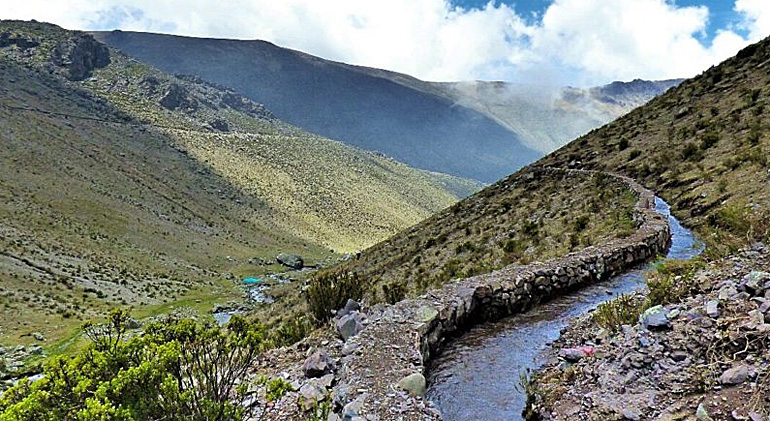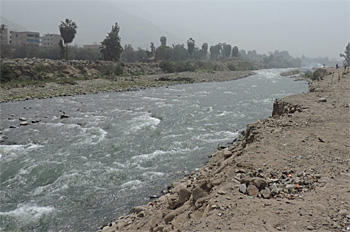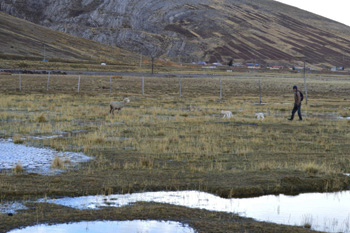Call for Blue-Green Infrastructure to balance water flows in Peruvian basins

"By using traditional water features such as high altitude wetlands and traditional irrigation channels, it may be possible to store more water upstream and have more water available downstream all year". AquaFondo and Wetlands International are studying the possibilities of combining nature and semi-natural structures for water management and risk reduction in the Peruvian basins. "Let us build the Blue-Green Infrastructure necessary to make Peru adaptable to the extremes of a changing climate and make sure all Peruvians benefit from the services these provide". Five Dutch and Peruvian experts made this call in a blog on the website of Wetlands International. They are studying the possibilities in Peru to create a more constant flow of water from the mountains throughout the year.
 Swelling of the Rimac river, causing floods down stream.
Swelling of the Rimac river, causing floods down stream.
Bofedales
Their suggestion is to use Peru’s high altitude wetlands (bofedales) that are situated 3,800 m above sea level. These wetlands have underlying peat layers that act as a sponge to retain and purify water in the upper section of the river basins. However, bofedales have been affected by human activities including overgrazing, metal mining and peat extraction.
Pre-Inca water engineering
Old pre-Inca irrigation channels, amunas (on top photo) allow communities to distribute and harvest this water. These amunas still exist high up in the Andean mountains, and they also facilitate superficial and underground water recharge, ensuring the availability of water throughout the year.
With more prolonged droughts caused by climate change, the amunas represent a lifeline for peasant populations in the highlands while also contributing to the water supply of dams downstream.
 Management of the grazing is one of the measures to restore high Andean bofedales.
Management of the grazing is one of the measures to restore high Andean bofedales.
The potential of this Blue-Green Infrastructure is illustrated by the 135 km of amunas in the Chillón, Rimac and Lurin river basins that are within the scope of the expert organisation AquaFondo.
Beyond grey engineering
In their blog the experts argue that it is necessary to think beyond traditional or ‘grey’ engineering that channels rivers to protect the banks. This leads to faster discharge of excess water, increasing the risk of lower basin flooding. On the other hand, natural Blue-Green Infrastructure of floodplains can retard runoff due to their ability to temporarily store water (filling up and expanding the river); and lower the velocity of the river channel, thus controlling erosion.
This means that, instead of limiting the river, you must give it the space to grow and shrink, they advocate.
Read the full blog on the website of Wetlands International and more about the High Andes Wetlands project.
(Photos: Wetlands International / AquaFondo)
Read also on this website
● AIWW Summit 2018: How to speed up climate adaptation globally?, 20 November 2018
● World Water Forum 8: Huge potential for nature based solutions to reduce water risks, 28 March 2018
● Wetlands International helps to stop downward spiral of water insecurity in Sahel region, 6 March 2018
● Expertise: Water for all
More information
Wetlands International
Ede, the Netherlands
+31 318 660 910
www.wetlands.org



